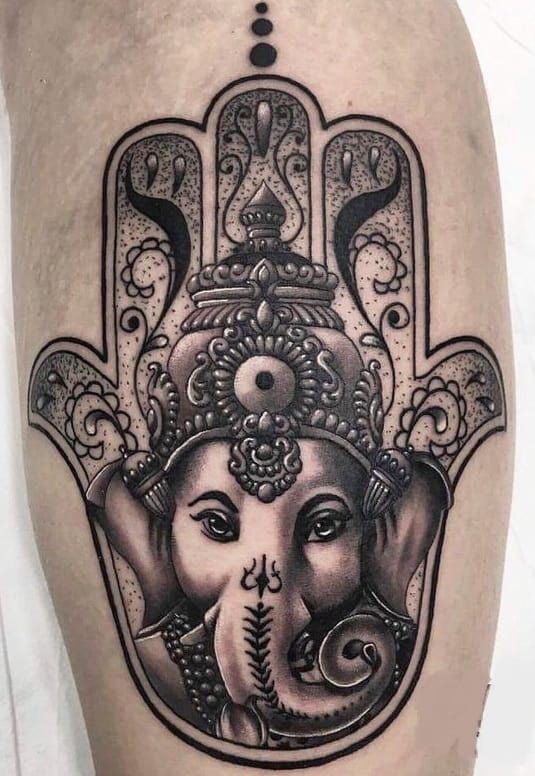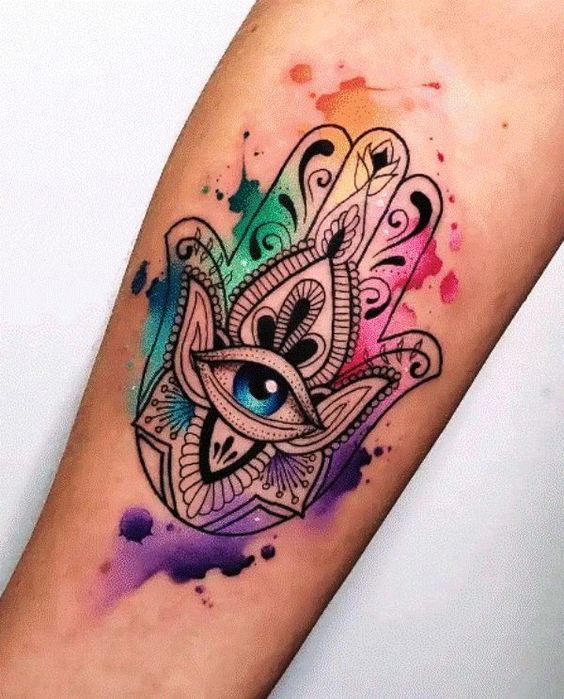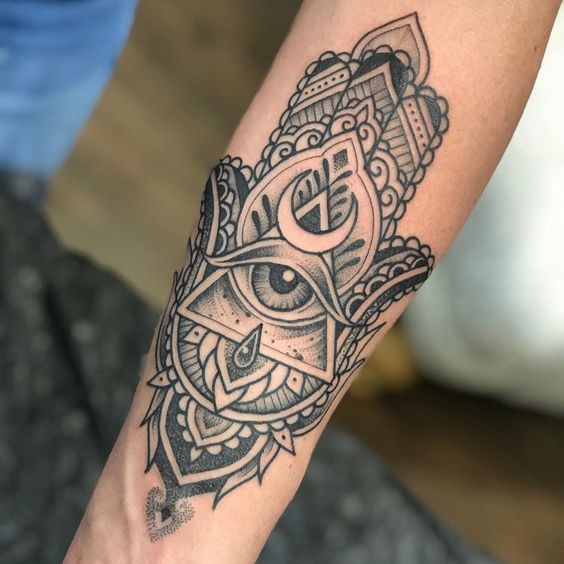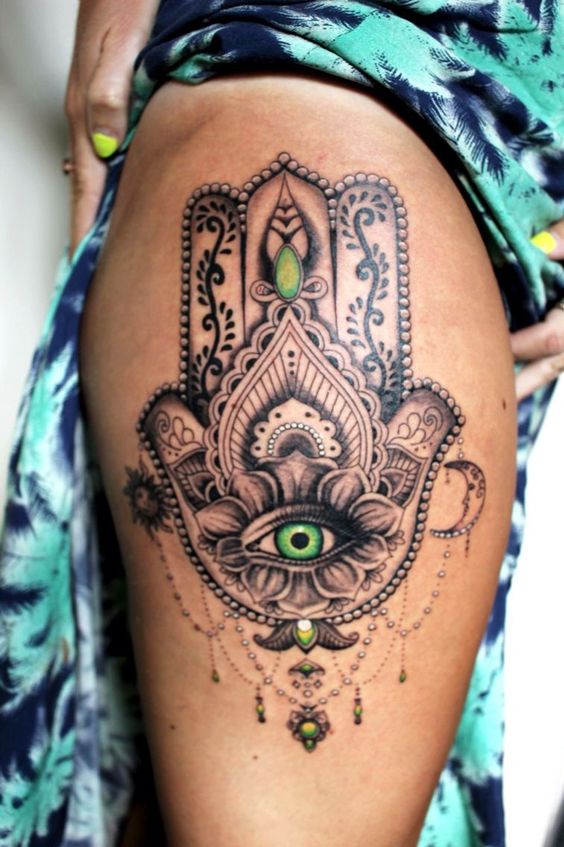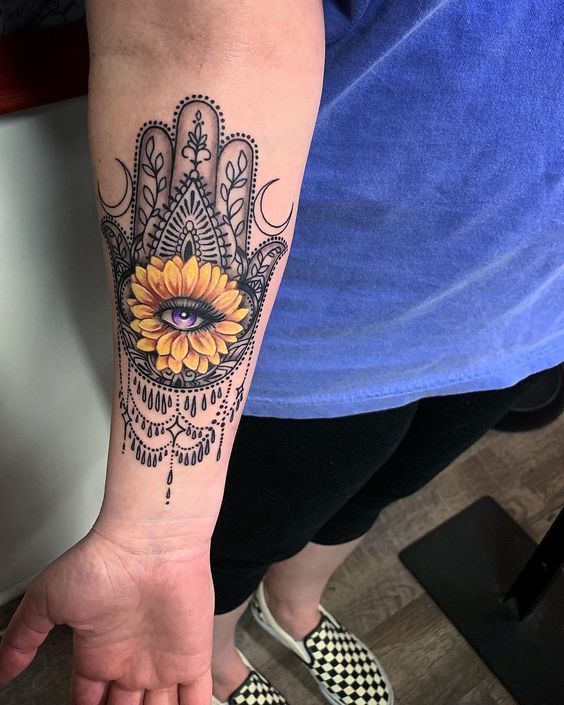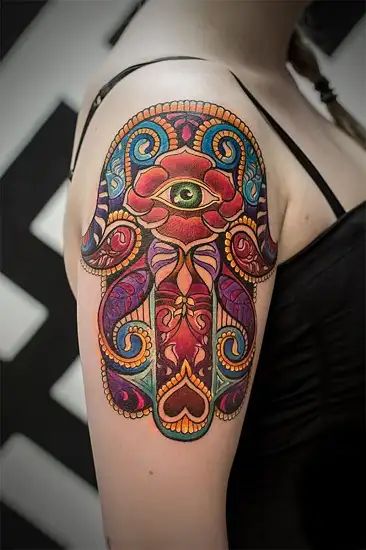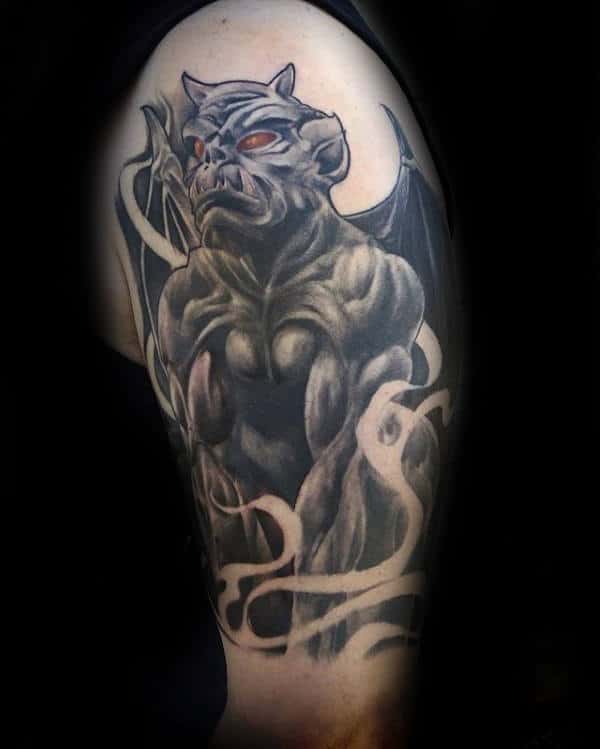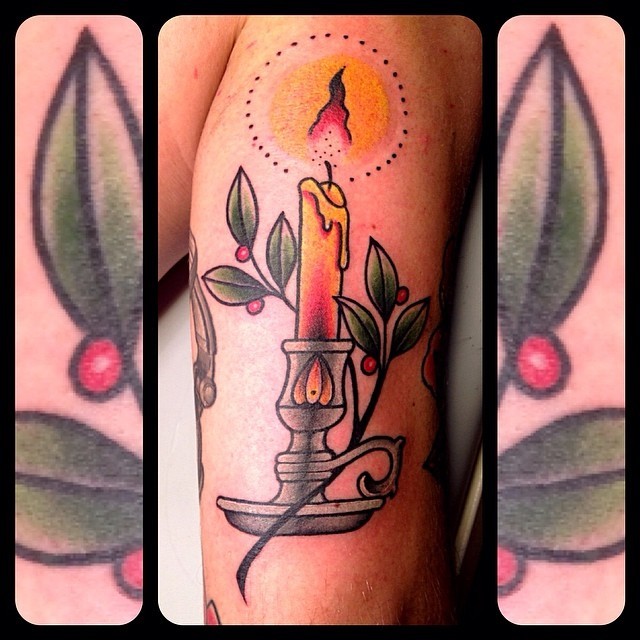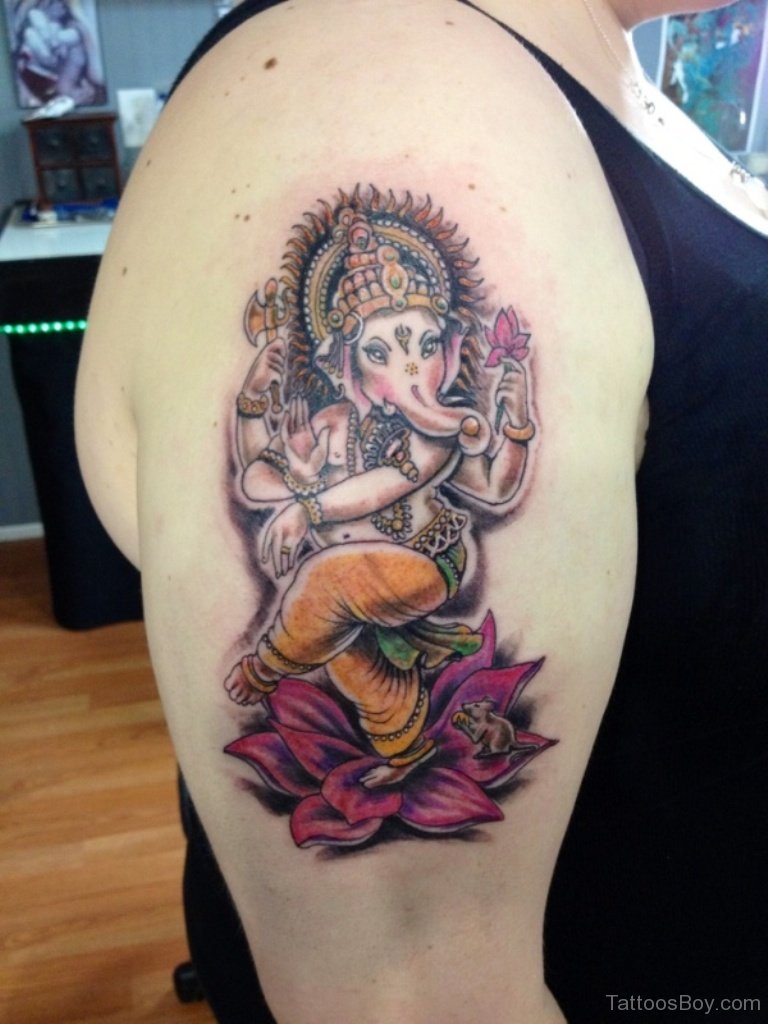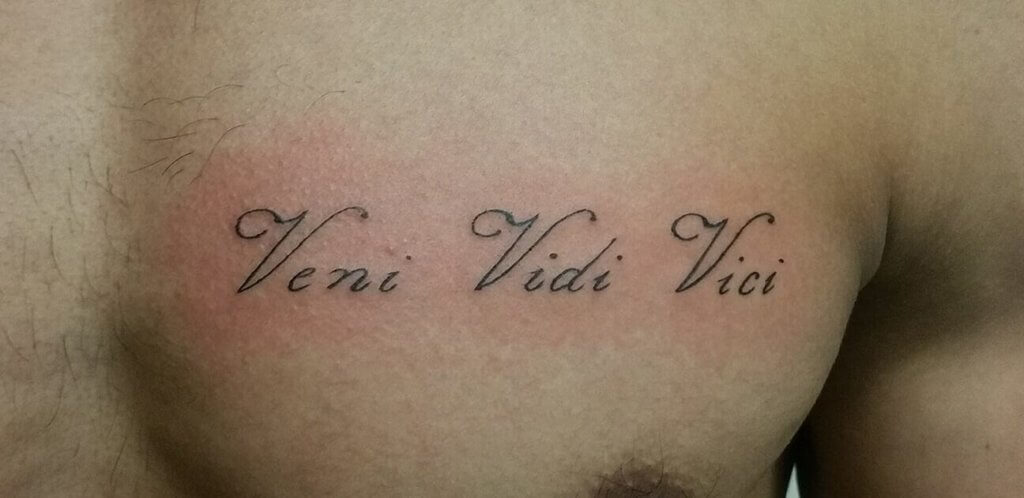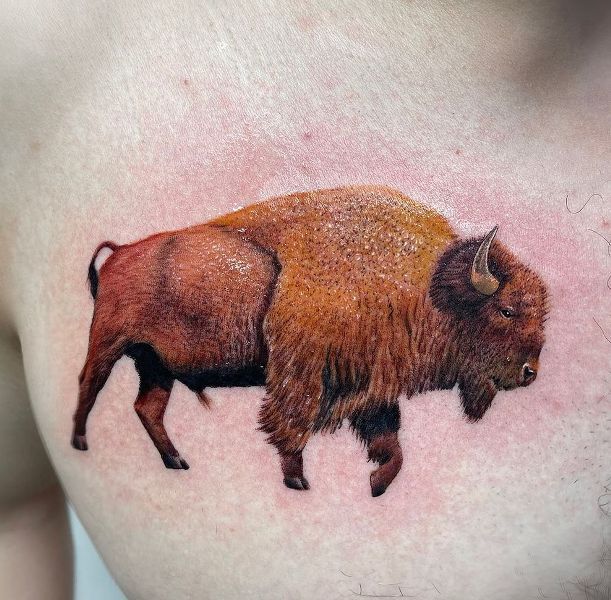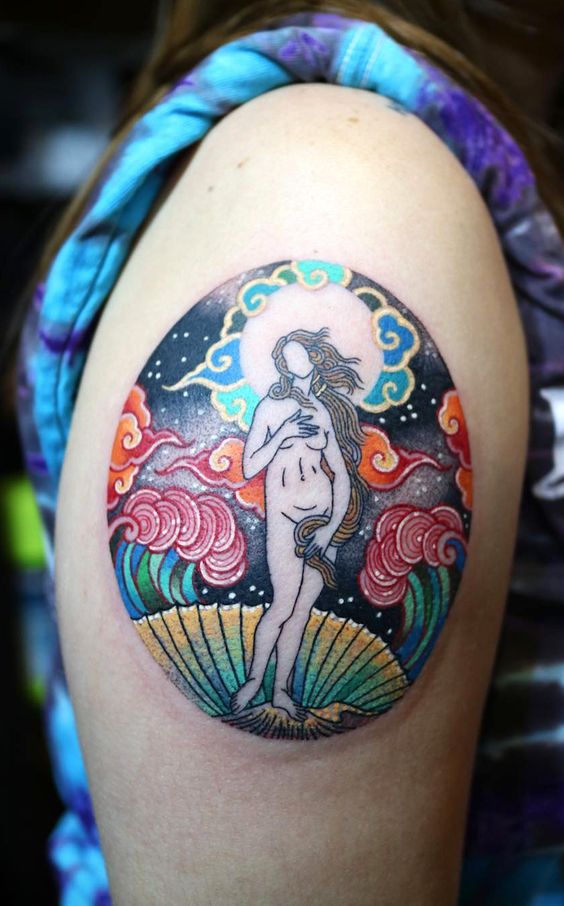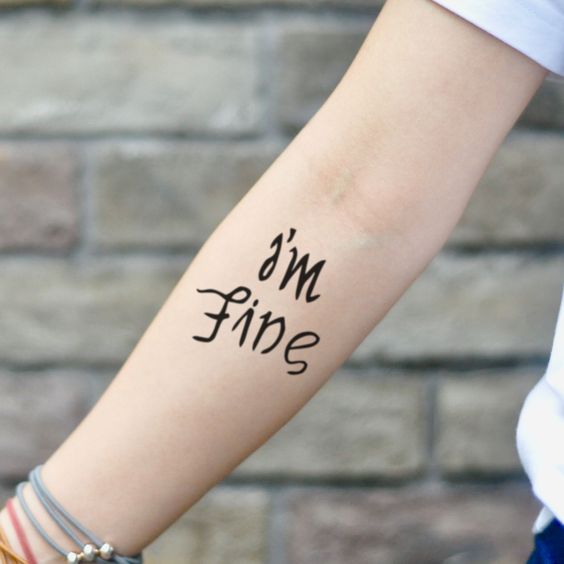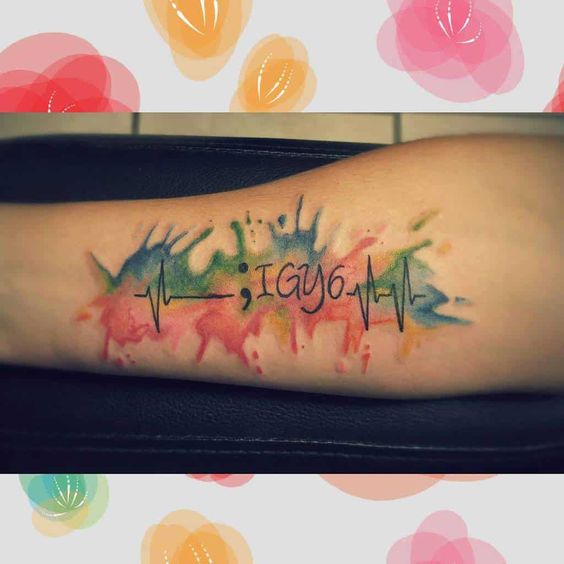The Hamsa tattoo meaning is more than just skin deep. This ancient symbol has captivated people for centuries. It’s not just a trend; it’s a statement of belief, culture, and individuality. So, let’s dive into its rich history and symbolism to understand why it’s such a popular choice for tattoos.
Hamsa Tattoo Meaning: The Historical Context
The Hamsa symbol originates from the Middle East and North Africa. It’s a palm-shaped amulet, often featuring an eye in the center. This symbol transcends religious boundaries, making it a versatile choice for anyone. Jews, Muslims, and Christians alike revere it. In Judaism, it’s known as the “Hand of Miriam.” In Islamic culture, it’s the “Hand of Fatima.” Consequently, it’s a versatile tattoo choice that can resonate with people from various backgrounds.
Symbolism: What Does It Represent?
The Hamsa symbol is a powerhouse of meanings. It’s commonly associated with protection against the evil eye. Additionally, it symbolizes strength, power, and blessings. In some cultures, it’s even considered a symbol of fertility. Therefore, a Hamsa tattoo can serve multiple purposes and convey different messages depending on the individual’s beliefs and intentions.
Hamsa Tattoo Meaning: Placement Ideas
The placement of your Hamsa tattoo can also carry significance. Popular spots include the forearm, back, and chest. However, the meaning can change depending on its location. A Hamsa tattoo on the forearm often signifies strength and protection, while one on the back might represent guidance and support. Moreover, the orientation of the Hamsa—fingers up or down—can also alter its meaning. Fingers up generally symbolizes protection against evil, while fingers down attracts good fortune.
Design Variations: Making It Unique
There are countless design variations for Hamsa tattoos. You can incorporate other symbols, like lotus flowers, mandalas, or even celestial bodies like stars and moons. Some people even add color to make it more vibrant, while others prefer the classic black ink for a more traditional look. In this way, you can make your tattoo uniquely yours while still retaining its core symbolism.
Hamsa Tattoo Meaning: Cultural Sensitivity
While the Hamsa is a symbol that crosses religious lines, it’s essential to approach it with cultural sensitivity. Make sure you understand the origins and meanings behind the symbol before getting it inked. This ensures that your tattoo is not just a fashion statement but a respectful nod to the cultures and religions that have revered this symbol for centuries.
The Popularity Surge: Why Now?
In recent years, the Hamsa tattoo has seen a surge in popularity. Social media platforms are flooded with intricate Hamsa designs, each telling a different story. Celebrities have also jumped on the bandwagon, further fueling its popularity. However, the core of its appeal remains its rich symbolism and the sense of protection and strength it offers.
Conclusion: The Lasting Appeal
In summary, the Hamsa tattoo is not just a trend; it’s a symbol rich in history and layered with meaning. Its versatility makes it a popular choice for people from all walks of life. Whether you’re seeking protection, strength, or blessings, a Hamsa tattoo offers a meaningful way to express these desires. It’s a timeless piece of art that resonates on both a personal and universal level.
Here are some inspiration for Hamsa tattoos:
